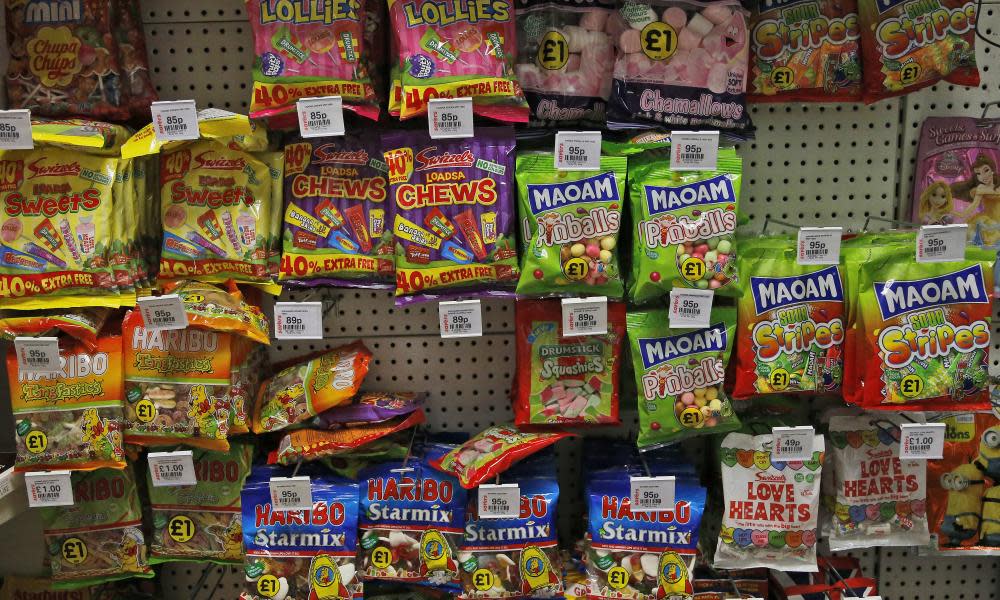As a dentist, I hate sugar. But I don’t want kids scared off it with horror packaging | Ollie Jupes

I believe it was George Benson who originally proposed the notion that “Children are our future.” As a corollary to this, he also suggested we teach them well and let them lead the way. Overall, I feel that Benson’s classic 70s worldwide hit was a reasonable musical template for a future world, but I think The Greatest Love of All omitted an all-important line that should have implored – let them have a bit of a childhood first, for Pete’s sake! And that doesn’t mean making them feel fearful every time they have a sweet treat.
From the point of view of someone who grew up in the relative innocence of the 60s, the world today is pretty horrible, and it’s increasingly difficult to protect children from the harsh realities of life in the 21st century. I mean, last week, we had the horror of children being exposed to the revelation that Barbie’s boyfriend, Ken, is now wearing a man-bun.
If that’s not bad enough, it’s about to get even more difficult to protect the innocent. For it’s just been announced that UK doctors are about to call for health warnings to be placed on the packaging of children’s foods where high sugar content may contribute to tooth decay.
A motion put forward by the north-west regional council of the British Medical Association’s annual representative meeting, held in Bournemouth this week, is to propose health warnings on confectionary packets as a measure to try to reduce the huge number of children (34,000) who have undergone tooth extractions under general anaesthesia over the past two years
Immediately, the media has drawn analogies with the graphic pictorial health warnings that have been compulsory on cigarettes since 2009. Diseased lungs, gangrened feet and badly broken-down mouths have all adorned the covers of cigarette packages over the years, but it is difficult to imagine what sort of messaging will adorn the front of a packet of Skittles, for example, or replace the cute teddy bear on a bag of Haribo.
I can’t quite imagine what type of graphic would act as a deterrent for a junior schoolchild
In fairness, the BMA resolution calling on the health secretary and the Food Standards Agency to place health warnings on packaging doesn’t specify how warnings should be displayed, but presumably in order to have an impact on children, they should really be pictorial. “High consumption of refined carbohydrates may result in dental caries or an increased risk of developing type 2 diabetes” may not have much of an impact on a seven year old.
I can’t quite imagine what type of graphic would act as a deterrent for a junior schoolchild. A photograph of an insulin-pen may go right over the head of even the most savvy of kids, regardless of whether they stay up of a weekend to watch Casualty. A cartoon of a slightly portly Billy No Mates being shunned by his peers in a playground as he eats his M&M’s may have an effect, as would a similarly proportioned child who fails to meet weight restrictions being steered away from a Disneyland ride by an admonishing and overtly disgusted Donald Duck. But it’s hard to see society accepting that kind of fat-shaming.
An intubated child having a tooth pulled while under a general anaesthetic, may, however, have an impact on a parent or grandparent who could be thinking of giving the kids “a treat”, as would a close-up photograph of a child wearing a denture. But would those be appropriate images to inflict on a youngster who is after all at indulging in something perfectly innocent and pleasurable?
Let me lay my cards on the table. I think sugar is a bastard. As a dentist I have seen incredible tooth destruction and morbidity as a result of sugar over the years, and like every dental professional who ever lived, I’m against the wholesale exposure to refined carbohydrates and hidden sugars in the diet. The dangers of sugar intake, as far as oral health are concerned, are not only rotting teeth, but possible infection and ultimately the extraction of teeth under general anaesthesia – a procedure with inherent and not inconsequential dangers.
Realistically, it is difficult for any parent to stop a child from accessing sweets completely, but allowing some restricted (non-sticky) treats at mealtimes is a start. The proposed sugar tax on drinks (if it ever comes about) is a step in the right direction, but the focus should still be on educating parents and grandparents (in my opinion, the biggest “treat” culprits) to discourage the intake of unnecessarily sugary stuff.
A discreet warning on a packet to parents may be a start to this adult education, but as for any over-the-top graphics – maybe leave the kiddies to grow up a bit first?
Now. Where are my Maltesers?

 Yahoo News
Yahoo News 
